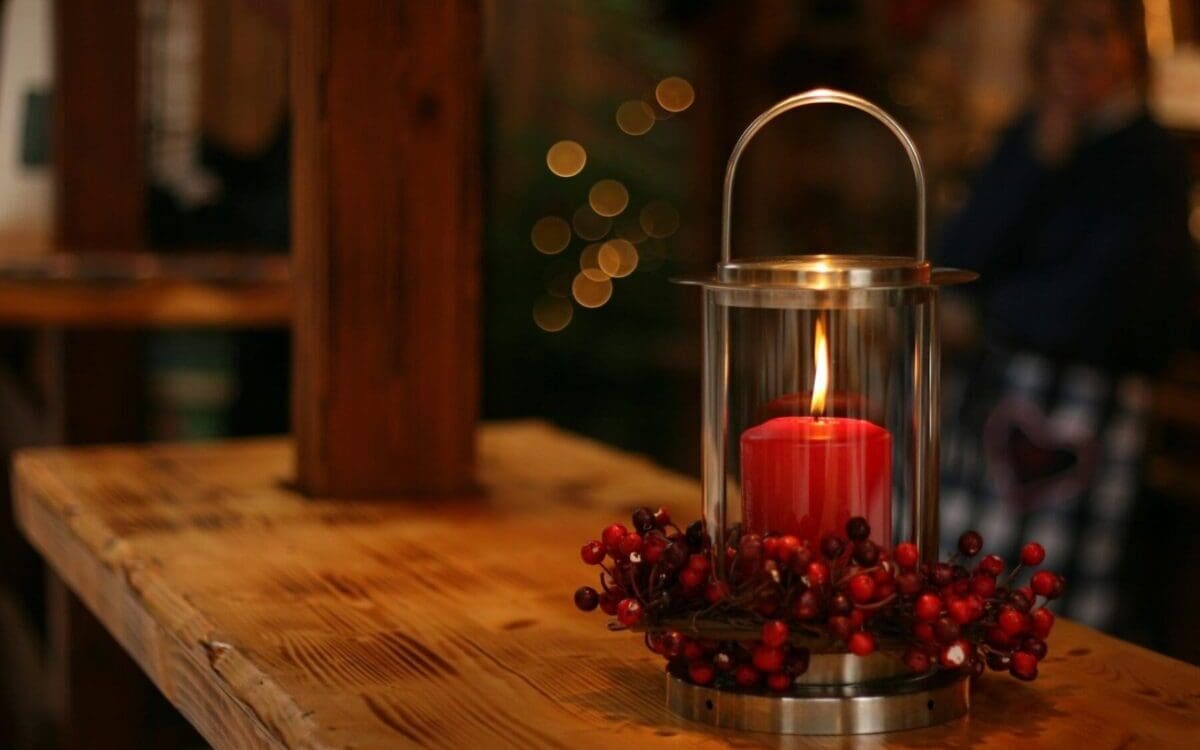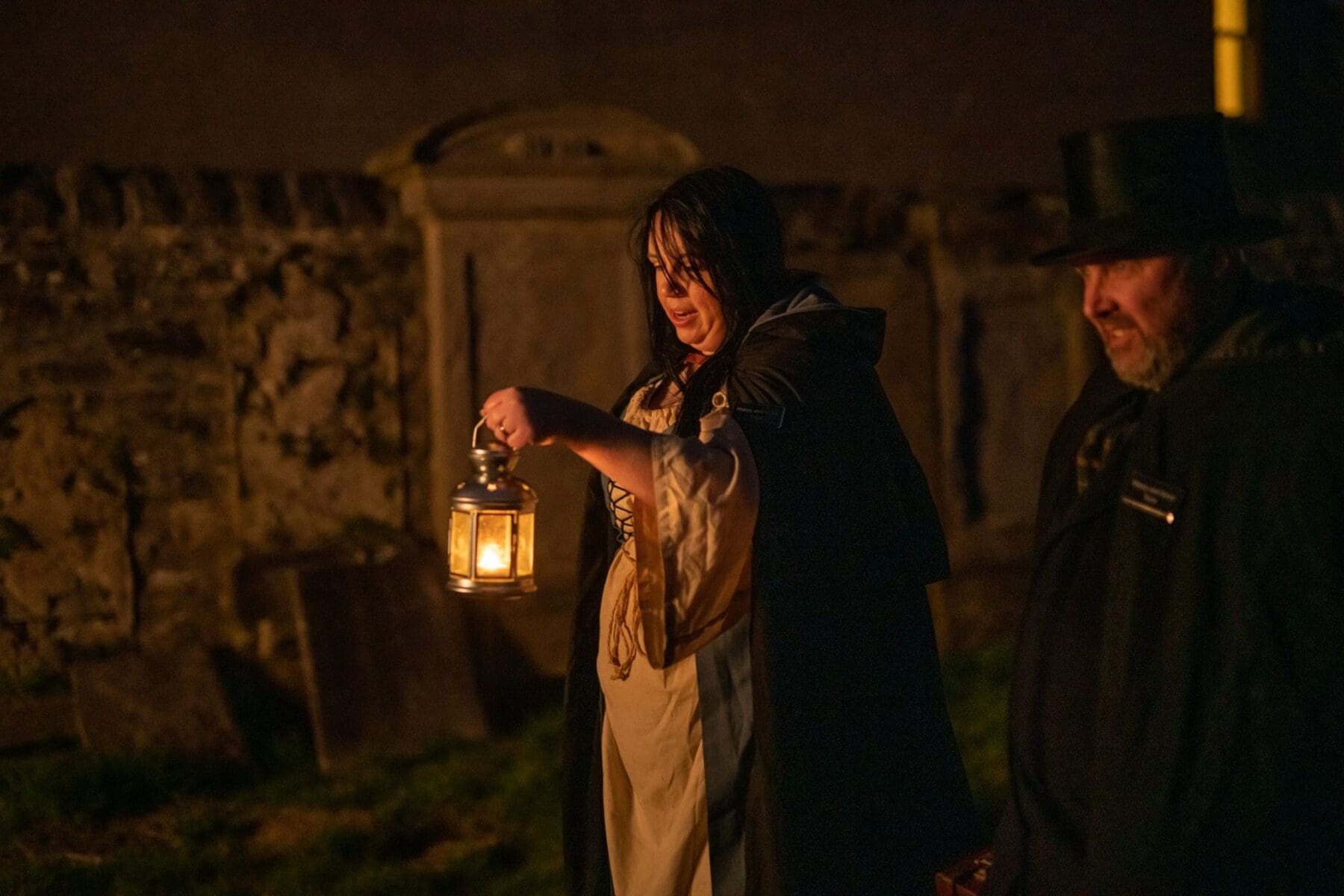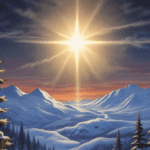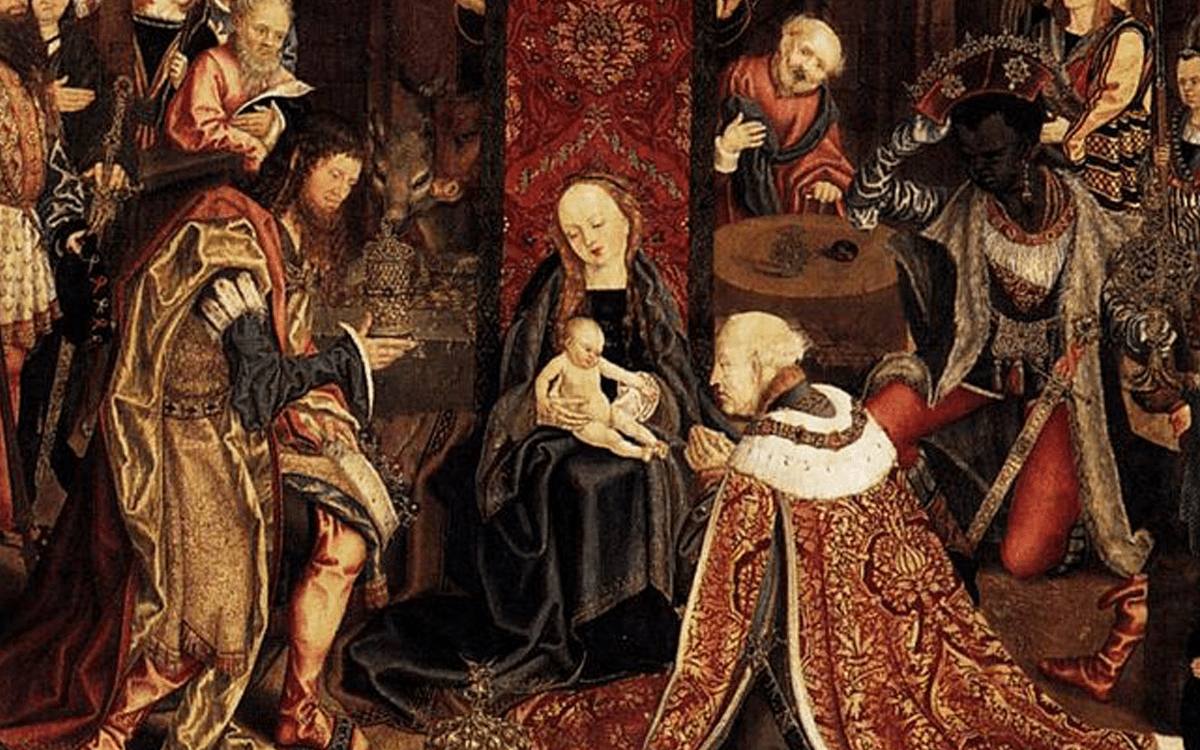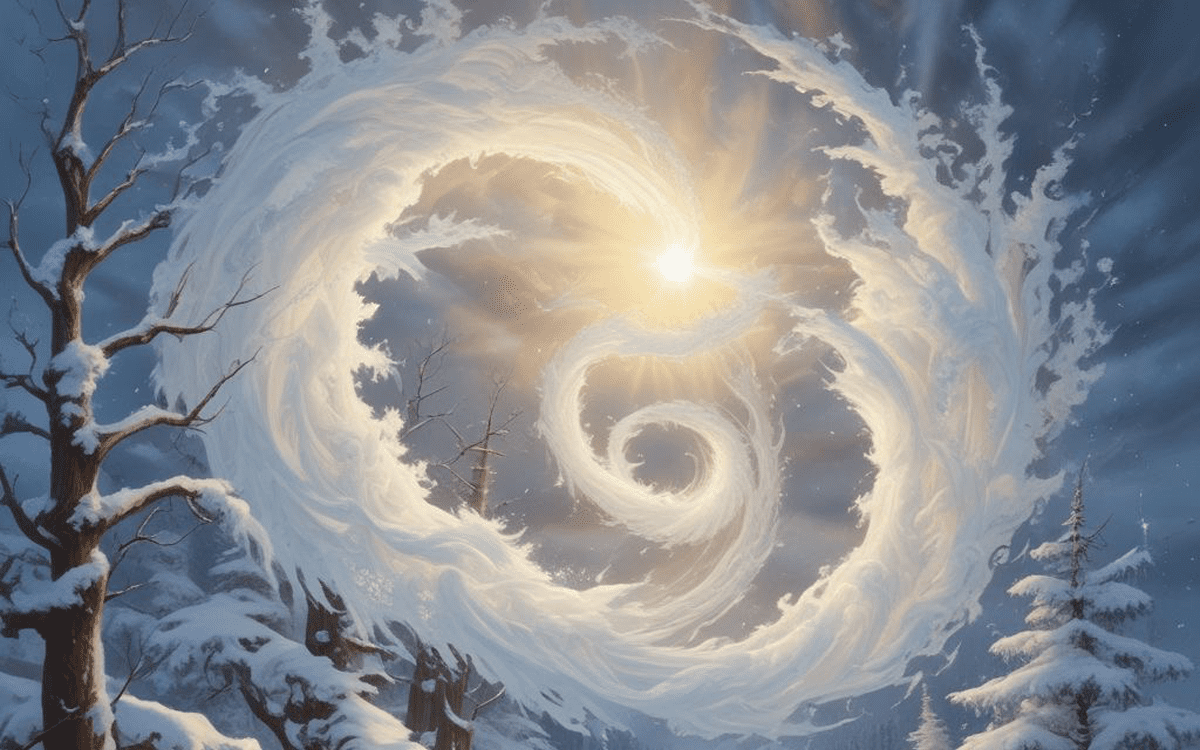Ancient Celebrations Across the World: Winter’s Festive Roots
As the second day of Christmas unfolds and St. Stephen’s Day graces us with its spirit of kindness and charity, we find ourselves drawn to the echoes of celebrations from a time long past. Beneath the layers of tinsel and tradition lies a tapestry of ancient rituals and festivals that have shaped our understanding of winter’s magic. These traditions, born of solstice nights and frost-covered lands, speak to a universal desire for light, abundance, and renewal.
From the revelry of Saturnalia in ancient Rome to the sacred fires of Yule in northern Europe, and the warmth of family gatherings during Dongzhi in China, each of these rituals invites us to journey back through time. They remind us that this season has always been about connection—between ourselves, the Earth, and the divine. Each celebration reflects a profound spiritual journey, a turning inward to honor the rhythms of life and the promise of new beginnings.
By exploring these ancient traditions, we embark on a form of transformational travel, one that spans centuries and cultures. It invites us to rediscover the threads of generosity, community, and gratitude that unite us all, offering a deeper understanding of the season’s enduring power. Let us step into this mystical past, where winter’s darkest days have always held the seeds of hope and the promise of light.
Saturnalia: The Roman Feast of Reversal
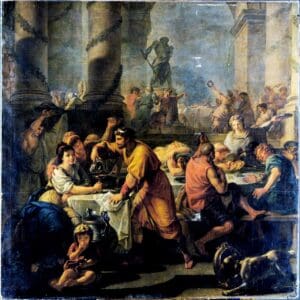
Saturnalia by Antoine Callet, 1783.
In the heart of ancient Rome, Saturnalia brought a spark of chaos and celebration to the darkest days of winter. Held from December 17th to the 23rd, this vibrant festival honored Saturn, the god of agriculture and wealth, and turned societal norms on its head. Roles were reversed, and the strict rules of daily life gave way to merriment and equality. At its core, Saturnalia was a time to set aside divisions and embrace the shared abundance of the season.
Gifts were shared as symbols of goodwill, while grand feasts overflowed from homes into the bustling streets. Saturnalia was not merely a time of revelry—it became a deeply communal experience. This spirit allowed people to come together, strengthen bonds, and honor Saturn’s role in the cycles of life and abundance.
The echoes of Saturnalia are still felt in modern holiday traditions. The joy of giving gifts, the warmth of shared meals, and the spirit of togetherness all trace back to this ancient Roman festival. It reminds us of the power of celebration to unite people and transform perspectives, much like the way transformational travel opens the mind and heart. Saturnalia’s message endures: the darkest times are an opportunity to find light, abundance, and connection.
Yule: The Norse Celebration of Light
In the icy reaches of the north, where winters were long and darkness seemed unyielding, the Norse peoples found ways to celebrate the enduring cycles of life and the promise of brighter days. Yule, their midwinter festival, was far more than a moment of festivity—it was a sacred time to honor the return of light and the resilience of both nature and the human spirit.
At the heart of Yule was the tradition of the Yule log. Families would bring an enormous log into their homes, its size symbolizing strength and protection. When it was lit, the flames were thought to drive away the darkness and bring blessings for the year ahead. The Yule fire didn’t just warm homes; it served as a beacon, uniting communities and offering hope against the starkness of winter.
Yule gatherings were rich with meaning. Families came together to share meals, sing ancient songs, and tell stories passed down through generations. These moments were more than acts of celebration—they were acts of survival, of finding joy and connection even in the harshest times. People invoked their ancestors and the gods, seeking their protection and blessings for the season ahead.
The evergreens used in Yule decorations, such as fir branches brought into homes, carried deep symbolic weight. These plants, which remained vibrant and green despite the cold, became emblems of endurance and the promise of renewal. In many ways, they remind us of the modern Christmas tree, which continues to symbolize life and hope during winter’s stillness.
The legacy of Yule speaks to the enduring strength of community. It teaches us that even in the darkest days, we can come together to create warmth, light, and meaning. Today’s winter traditions owe much to these ancient practices, which remind us that resilience and hope are timeless.
Ready to plan a spiritual journey of your own this Winter? Start planning the experience of a lifetime HERE!
To keep up with our blog and other Mysterious Adventures offers, sign up for our newsletter HERE!
Dongzhi: The Winter Solstice Festival of China

Tangyuan, a traditional Dongzhi Festival food.
Winter settles over China with a quiet intensity, its longest night drawing families closer as they prepare to welcome the Dongzhi Festival. This deeply rooted tradition has been a beacon of hope in the coldest season for more than two thousand years. It’s a time to pause, reflect, and honor the cycles of nature that shape our lives. Dongzhi isn’t just about the turn of the solstice—it’s a spiritual journey that invites people to find a balance between darkness and light, rest and renewal, and to embrace the gentle promise of brighter days ahead.
Picture a family gathered around a small, warmly lit table. Outside, the world is hushed under a blanket of winter, but inside, their home is alive with the clinking of bowls and soft laughter. At the center of their celebration are bowls of tangyuan, sweet rice balls delicately prepared and shared. Their smooth, round shape is more than just a culinary detail—it symbolizes wholeness, unity, and the bonds of love that tie the family together. Each bite is a wish for prosperity, health, and enduring togetherness, a simple but profound reminder of the beauty of connection.
Dongzhi carries a wisdom that feels timeless. Its spirit teaches us to look beyond the cold and find meaning in life’s quiet seasons. Much like transformational travel, which changes the way we see the world and our place within it, this festival encourages introspection and gratitude. In the stillness of winter, Dongzhi reminds us that even in our darkest moments, light is never far away.
As the longest night gives way to lengthening days, Dongzhi leaves behind more than warm memories. It offers a lesson: that renewal is always possible, that togetherness is a source of strength, and that every season, even the harshest one, carries the seeds of new beginnings.
St. Stephen’s Day and the Spirit of Generosity
St. Stephen, the first Christian martyr, is remembered for his compassion and unwavering faith. His feast day, celebrated on December 26th, is closely tied to the idea of giving to those in need. In many cultures, this day is also known as Boxing Day—a time when the less fortunate traditionally received gifts or “boxes” of food and goods.
This spirit of selflessness aligns beautifully with the ancient festivals of Saturnalia, Yule, and Dongzhi. Each celebration shares a common thread: the recognition that abundance is meant to be shared, especially during the coldest and darkest time of the year.
Common Threads Across Time and Cultures

Evergreen decorations during the Winter seem to be a universal connection.
Though these ancient celebrations come from diverse cultures, their core themes—renewal, abundance, and connection—remain universal. They teach us to find joy in togetherness and to embrace the rhythm of the seasons.
Modern Christmas traditions borrow from these ancient rituals, blending light and warmth with acts of giving. Feasting, decorating with evergreens, and sharing gifts are echoes of festivals that connected humanity to the cycles of nature and the sacredness of community.
Traveling Through Time: Connecting with Ancient Celebrations
For travelers inspired by these traditions, there are countless destinations that bring the magic and spirit of ancient winter festivals to life:
- Rome, Italy: Explore ruins like the Temple of Saturn, immersing yourself in Saturnalia’s legacy.
- Norway and Scandinavia: Experience modern Yule traditions, from cozy hearthside gatherings to breathtaking northern lights tours.
- China: Visit regions where Dongzhi is celebrated with vibrant family feasts and ceremonies marking the solstice.
Each of these destinations offers a window into the rich history of winter celebrations, inviting us to reconnect with the roots of generosity and joy.
Embracing Ancient Wisdom
As we celebrate St. Stephen’s Day, let us remember the deeper meaning of winter’s festivities. Whether inspired by Saturnalia’s inclusivity, Yule’s warmth, or Dongzhi’s unity, these ancient traditions remind us of the enduring power of generosity. Each one invites us to embark on a spiritual journey, reflecting on how acts of kindness and connection can transform not only our lives but the world around us.
In the stillness of winter, may we find moments to give, connect, and embrace the cycles that sustain us. These traditions, much like transformational travel, encourage us to step beyond the familiar and discover the beauty of renewal, community, and hope.
Embark on a mysterious adventure with us!
Explore divinely selected places, where enigma thrives in every corner. From lands vibrating with mystique to ancient realms echoing with phantom tales, our Mysterious Adventures await. Join the journey and unravel the secrets of the extraordinary.

